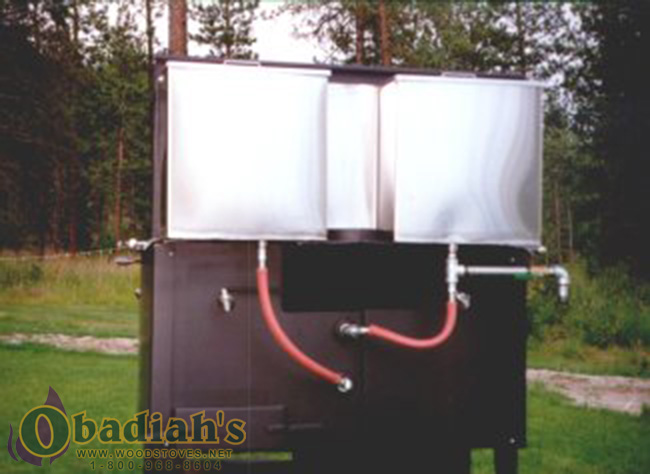 |
 |
 |
 |
Obadiah's is no longer selling Kitchen Queen stoves - This page is for informational purposes only.
|
Specifications
|
480 Kitchen Queen
|
Overall Size
|
53"L x 32"W x 32"H
|
Cooking Surface
|
43" x 21"
|
Warming Shelf (standard)
|
9" x 45"
|
Warming Oven (optional)
|
9-1/2" W x 54" L x 6" H
|
Back
|
45"W x 23"H
|
Oven
|
16"W x 13"H x 22"D
|
Oven Capacity
|
8 loaves
|
Firebox
|
20"W x 18"H x 22"D
|
Log Length
|
21"
|
Firebox Door
|
14" x 16"
|
Approx. Burn Time
|
12-16 hours
|
Approx. Heating Area
|
1,500-2,400 sq ft
|
Flue Outlet Size
|
7"
|
Reservoir Capacity
|
24 gallons
|
UL Listing
|
1482
|
Clearances To Combustibles
|
Measurements in Inches
|
Side
|
12"
|
Rear
|
18"
|
Corner
|
12"
|
Clearances To Protected Surfaces
|
|
Side
|
6"
|
Rear
|
6"
|
|
Corner
|
6"
|
Chimney Connector
|
|
Unprotected surface
|
18"
|
Protected Surface
|
6"
|
The measurements below are the 'usable' cooktop area without the beveled edge.

|
|
 |
 |
 |
 |
 |
 |
 |
 |
 |
 |
 |
Features
|
The
Kitchen Queen includes finger-tip damper controls and a beautifully
finished porcelain oven
with easy ash removal and an optional large
water reservoir.
The
The Kitchen Queen
480 has a 24
gallon water reservoir system, that heats from the radiant heat
on the stove. You can also connect the reservoir to a water coil
installed into the firebox. The water is then heated via a water siphon
system.
Cold water enters the firebox through a heat exchanger (water
coil) and
converts it to hot water, with no moving parts or electricity.
The heat
exchanger can be connected to a large hot water tank for whole
house use. It is not recommended to connect a coil to a reservoir unless
there is a large daily demand for hot water. Please consult a boiler
specialist for this type of installation.

The huge oven
is the heart of the stove. This revolutionary design makes total sense, yet
is the total opposite of every wood cookstove on the market. Other stoves
try to pull the smoke over the top of the oven, down the side, around
the bottom, and then back out the top. Heat rises naturally, it makes
more sense to vent the firebox off the side so the heat travels under
the oven, up the side, over the top, and out the flue. This also
significantly reduces the creosote build up which can be difficult to
clean out.
|
|
|
|


Shown with firebox (left) and oven doors open
|

Back of stove shown with water reservoir, plumbed to an optional water coil in the firebox.
|
|
|
|
|
 |
 |
 |
 |

|


 Kitchen Queen 380
Kitchen Queen 380 


